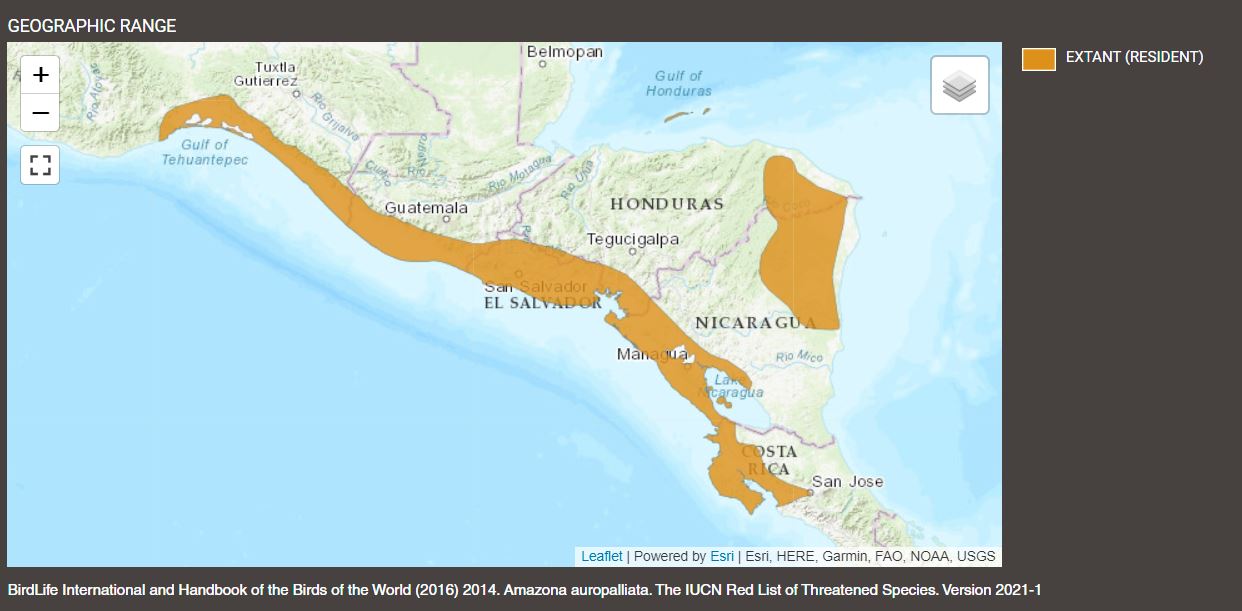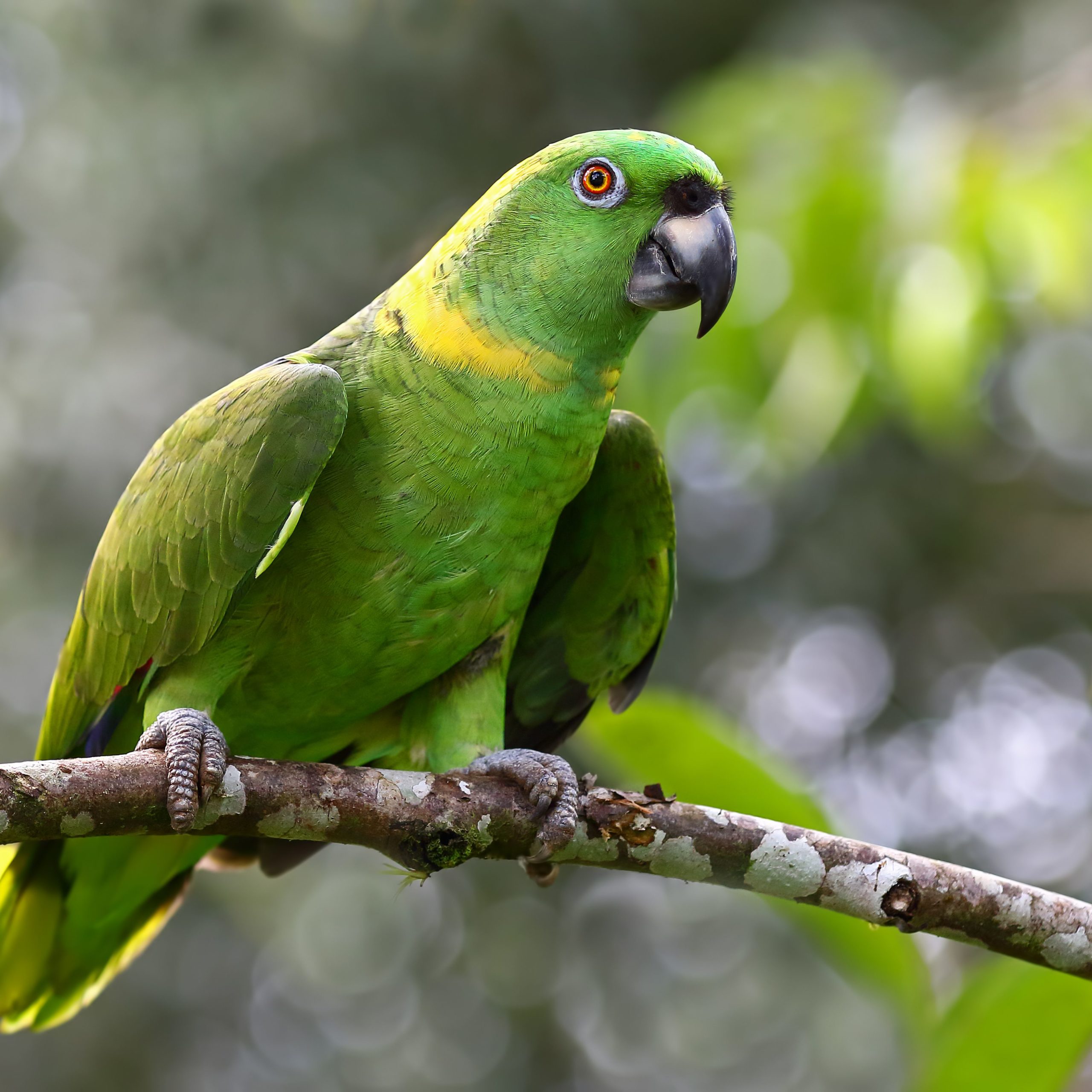
YELLOW-NAPED AMAZON
KINGDOM: Animalia
PHYLUM: Chordata
CLASS: Aves
ORDER: Psittaciformes
FAMILY: Psittacidae
GENUS: Amazona
SPECIES: Amazona auropalliata
POPULATION SIZE: Under 50,000
LIFE SPAN: 80 YRS
WEIGHT: 500-700 G
LENGTH: 36 CM
WINGSPAN: 20 CM
How the
Yellow-Naped Amazon
lives
These birds are powerful flyers, and they fly at some height when traveling long distances. They are diurnal and extremely social, living in large groups when in the wild. Their call is a repeated screeching “kurr-owk”. They also produce a range of whistling calls and metallic shrieks. They engage in nest-protective behaviors, often causing them to bite, this behavior being particularly common amongst, but not limited to, the male during the breeding season. They do not always manage their emotions well, and they signal when over-excited or stressed by spreading or fanning their tail and contracting and expanding their pupils (eye pinning). As pets these birds are appreciated for their intelligence, clownish personality, and impressive singing and talking abilities, which are enhanced by their very good sense of pitch. When they talk, it sounds amazingly human like.
GROUP NAME: flock, company, pandemonium
How many
Yellow-Naped Amazon
are there?
Population threats
The main threat to Yellow-naped amazons is deforestation, which reduces the number of wild parrot populations, as well as capture of young for the illegal pet trade.
Population number
According to the IUCN Red List, the total Yellow-naped amazon population size is fewer than 50,000 individuals. Currently this species is classified as Endangered (EN) and their numbers today are decreasing.






